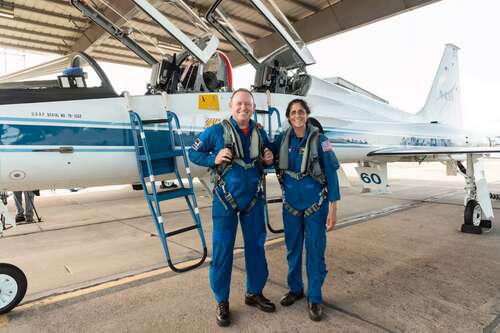TL;DR: After years of delays, the first crewed flight of Boeing’s Starliner capsule was scheduled for mid-April, but the mission is facing postponement once more – this time due to scheduling conflicts. The planned mission will fly atop a United Launch Alliance rocket, take two astronauts up to the ISS for a brief stay, before returning Earth-side after one to two weeks.
Boeing started developing the Starliner capsule back in 2010 as part of NASA’s Commercial Crew Program, a venture aimed at partnering with private firms to bolster NASA’s capabilities. The project has experienced a decade of delays but was finally set to launch a crewed test flight in April. However, it was announced on Friday that the mission has been postponed by another month.
NASA announced, two days before the launch, that the crewed flight is now “scheduled to launch in early May due to space station scheduling.” The mission will be launched atop a United Launch Alliance rocket, carrying NASA astronauts Butch Wilmore and Suni Williams to the International Space Station (ISS) for a brief stay before returning to Earth after one to two weeks.

While this latest delay is due to administrative reasons, the Starliner program has encountered more serious and systemic issues in the past. One of the three Starliner capsules was retired after a failed test because engineers could not determine the cause of the failure. Then, in June 2023, the other two capsules were grounded indefinitely when two major safety issues were discovered: the tethers connecting the module’s parachutes could not support the full weight of the craft, and hundreds of feet of flammable tape had been used to insulate wiring inside the craft.
Thankfully, these technical and engineering issues seem to have been resolved.
However, even if everything goes according to plan in May, the Starliner program will not have achieved the success Boeing had hoped for. Starliner is one of two private partnerships under NASA’s Commercial Crew Program, the other being SpaceX’s Crew Dragon capsules. The Dragon missions became the first private spacecraft to carry passengers to the ISS in May 2020 – almost exactly four years before Boeing’s scheduled launch.
But even if everything goes according to plan in May, the Starliner program will not have proved to be the success that Boeing was hoping for. Starliner is one of two private partnerships formed under NASA’s Commercial Crew Program, the other is SpaceX’s Crew Dragon capsules. The Dragon missions became the first private spacecraft to carry passengers to the ISS in May 2020 – almost exactly four years before Boeing’s scheduled launch.
NASA will host three news conferences for the mission on March 22 to discuss flight objectives and plans, and to conduct interviews with astronauts Wilmore and Williams. The conferences will be available for live viewing on NASA+ or the NASA website.

